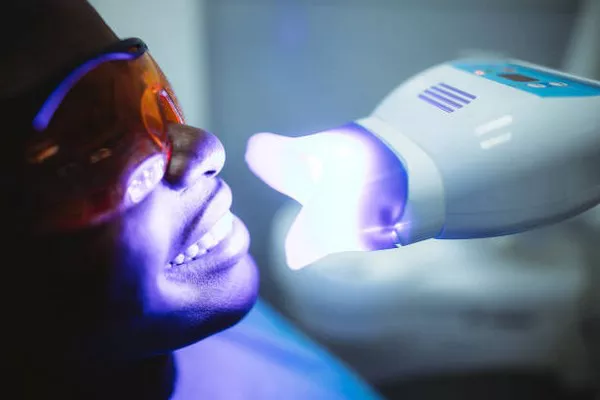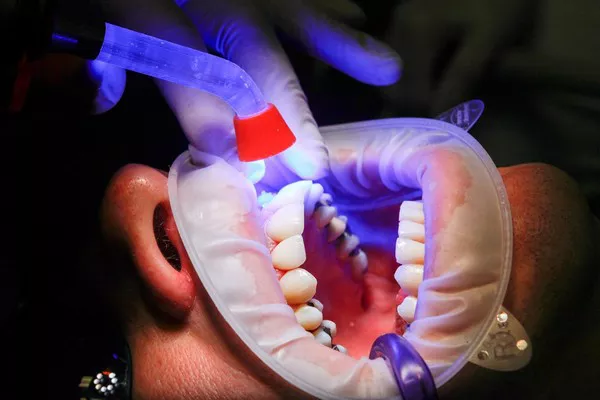When a tooth becomes “dead,” it means the nerve inside has been damaged or removed, often due to trauma or extensive decay. Dead teeth present a unique challenge for whitening because traditional methods rely on the tooth’s ability to absorb whitening agents through its blood supply—a process impossible in a dead tooth. This article delves into the reasons behind this challenge, explores various whitening options for dead teeth, considers the costs of whitening a dead tooth, factors affecting pricing, compares alternative treatments, and underscores the importance of professional guidance in making informed decisions.
Why Dead Teeth Don’t Whiten
Dead teeth, or non-vital teeth, lack a live nerve and blood supply needed for traditional whitening treatments to be effective. External stains caused by food, drinks, or smoking can be removed with surface whitening, but internal staining within the tooth cannot be reached by conventional whitening agents.
Internal Staining
Internal staining in dead teeth occurs due to factors like previous trauma, decay, or the breakdown of red blood cells inside the tooth structure. This type of staining is often resistant to external whitening methods and requires specialized internal treatments to address.
Whitening Options for Dead Teeth
Internal Bleaching
Internal bleaching is a procedure specifically designed for dead teeth with internal staining. It involves creating a small access hole in the tooth, typically through the back (lingual) surface, and placing a whitening agent directly inside the pulp chamber. The whitening agent is left in place for a specified period, often aided by a curing light to activate the bleaching process. This method gradually lightens the internal discoloration and can significantly improve the tooth’s appearance.
Veneers
Porcelain veneers offer an alternative solution for dead teeth with stubborn internal stains. These thin shells are custom-made to fit over the front surface of the tooth, effectively masking discoloration and providing a natural-looking, durable white appearance. Veneers require minimal tooth preparation and are bonded securely to the tooth, enhancing both aesthetics and strength.
Crowns
Dental crowns are another option for dead teeth, particularly those with extensive damage or structural issues beyond staining. A crown covers the entire visible portion of the tooth above the gum line, providing comprehensive restoration of function and appearance. Crowns are fabricated from durable materials such as porcelain fused to metal, ceramic, or zirconia, ensuring long-term durability and aesthetics.
Cost Considerations
Internal Bleaching
The cost of internal bleaching for dead teeth can vary widely depending on factors such as the dentist’s expertise, geographic location, and the complexity of the case. On average, patients can expect to pay between $500 to $1,500 per tooth for internal bleaching. This procedure is generally more expensive than traditional external whitening due to its specialized nature and the need for multiple appointments.
Veneers
Porcelain veneers typically cost between $1,000 to $2,500 per tooth. While more expensive than internal bleaching, veneers offer a permanent solution for masking internal stains and correcting other aesthetic concerns like shape or alignment issues. Veneers are highly customizable and provide natural-looking results that can last 10-15 years or longer with proper care.
Crowns
Dental crowns are the most costly option for treating dead teeth, with prices ranging from $1,500 to $3,000 or more per tooth. The higher cost reflects the extensive restoration involved, as crowns require substantial tooth preparation and fabrication in a dental laboratory. Crowns provide exceptional strength and durability, making them suitable for teeth with significant structural damage or weakened enamel.
See Also: How Can I Whiten My Teeth
Factors Affecting Cost
Location
Dental treatment costs can vary significantly based on geographic location and local market trends. Urban areas and regions with higher living costs generally have higher dental fees compared to rural or less densely populated areas.
Dentist’s Fees
The experience, training, and reputation of the dentist or specialist performing the procedure can influence the overall cost. Specialists such as prosthodontists or endodontists may charge higher fees for their expertise in treating complex dental cases.
Complexity of the Case
The complexity of the patient’s dental condition plays a crucial role in determining treatment costs. Additional procedures, such as root canal therapy before internal bleaching or extensive tooth preparation for crowns, can increase the overall expense of treatment.
Comparison to Other Options
Veneers vs. Crowns
Both veneers and crowns provide effective solutions for masking internal stains in dead teeth. Veneers are more conservative in tooth preparation, require less removal of natural tooth structure, and are generally less costly than crowns. However, crowns offer superior strength and coverage for teeth with extensive damage or weakened structure.
Whitening vs. Other Treatments
Traditional external whitening treatments, such as professional teeth whitening or whitening strips, are generally less expensive than internal bleaching, veneers, or crowns. However, these methods are not effective for dead teeth with internal staining and may not produce satisfactory results in such cases.
Conclusion
In conclusion, addressing internal staining in dead teeth requires specialized treatment options tailored to individual needs and preferences. Internal bleaching, veneers, and crowns offer effective solutions for enhancing the appearance of dead teeth, with varying costs and benefits to consider. Consulting with a qualified dentist or specialist is essential for evaluating treatment options, understanding associated costs, and achieving optimal outcomes.
Patients should seek professional advice to determine the most suitable treatment based on their oral health status, aesthetic goals, and budgetary considerations. By understanding the costs and benefits of each option and discussing concerns with their dental provider, patients can make informed decisions to restore a natural-looking smile and maintain oral health for years to come.
You Might Be Interested In






























